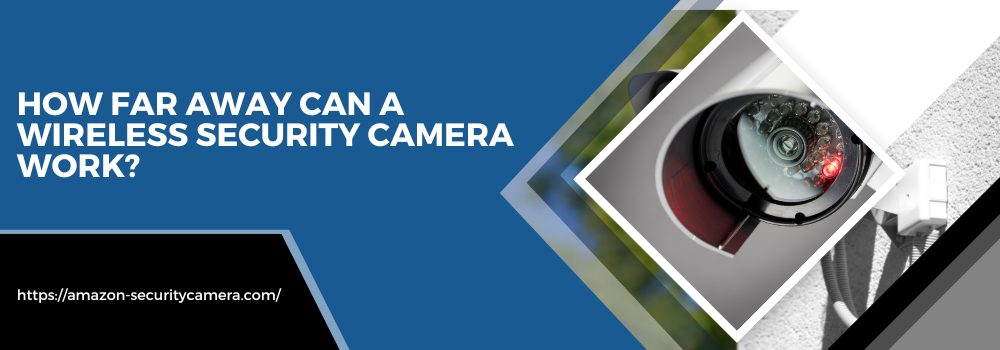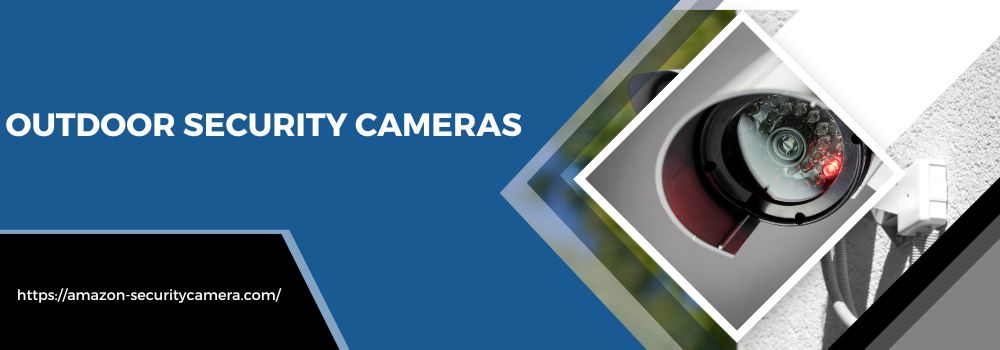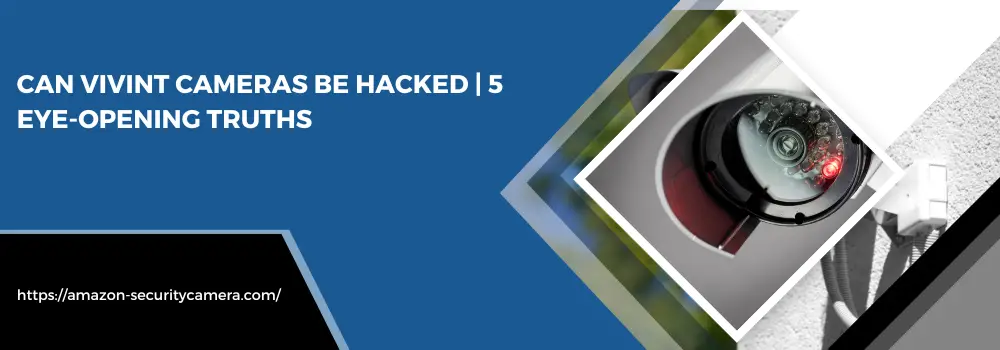How far away can a wireless security camera work? Are you interested in installing a wireless security camera to keep an eye on your property? There are several factors to consider when determining how far away from the monitoring device a wireless security camera can be situated.
The range of a wireless security camera greatly depends on the specific model and the type of wireless technology it utilizes. In general, Wi-Fi-based security cameras can typically function effectively within a range of approximately 250 feet in open, unobstructed areas. However, this range can be significantly reduced if there are walls or other physical barriers between the camera and the wireless router.
Not only do range and transmission strength come into play, but also environmental considerations like line-of-sight, obstacles, weather conditions, and more. This blog post will explore all of these topics so that you have the information necessary to get the most out of your wireless security camera system!
How far away can a wireless security camera work?
Read an article about How far away can a wireless security camera work?
Read another article about Night Owl security cameras | Choose the Best Camera for Your Choice
Table of Contents
Overview of Wireless Security Camera Technology
Wireless security cameras have revolutionized home security, offering flexibility and ease of use. They employ radio transmitters to send video signals to a receiver connected to a local or cloud-based storage system. This technology eliminates the need for extensive wiring, making installation a breeze.
These cameras often utilize Wi-Fi to transmit footage, allowing real-time viewing and recording. Some models even offer advanced features such as motion detection and night vision. Interference can affect the quality of the transmitted data, but overall, wireless cameras provide an efficient, convenient solution for home security.
Different wireless technologies come with their strengths and weaknesses. For instance, Wi-Fi cameras require a strong network connection for optimal performance. On the other hand, cellular cameras rely on a mobile network, offering independence from home internet but are subject to network coverage and strength. Understanding these aspects can help you choose the best wireless security camera for your needs.
How far does the signal reach for different cameras and manufacturers?
When assessing signal reach, each camera brand and model presents unique specifications. For instance, Arlo Pro cameras boast an impressive maximum range of 300 feet line-of-sight. However, obstacles such as walls or doors can significantly cut this distance.
On the other hand, Ring cameras offer a slightly lower range, typically around 200 feet. Bear in mind that this can be extended with the use of range extenders. Again, built structures and interference can reduce the effective distance.
Blink cameras, another popular choice, have a standard Wi-Fi range of 100 feet. Yet, they possess the advantage of reduced interference due to their proprietary technology. As always, the range can vary based on the environment and setup.
Different factors can affect the range of the signal, such as obstacles, interference, and weather conditions
Obstacles significantly impact the signal range of wireless security cameras. Common obstructions like walls, doors, and furniture can degrade signal strength. Thick concrete or metal barriers can even block the signal entirely.
Interference from other wireless devices can also disrupt the signal. Devices such as cordless phones, baby monitors, or other Wi-Fi routers operating on the same frequency can cause signal degradation. To mitigate this, consider using a dual-band router that can switch between frequencies.
Weather conditions, particularly for outdoor cameras, can affect signal range as well. Extreme cold or hot temperatures, heavy rain, and high winds can potentially disrupt the signal. Ensuring your camera is weather-resistant and designed for outdoor use can help maintain a stable connection in various weather conditions.
Tips to increase your camera’s range, including setting up multiple access points and using a directional antenna
Enhancing Wireless Security Camera Range
Having trouble with your camera’s range? Setting up multiple access points can be an effective solution. This addition can considerably extend the Wi-Fi signal coverage, enabling your camera to operate with more flexibility.
Another invaluable tip for increasing your camera’s range involves the use of a directional antenna. A fitting choice for long-range Wi-Fi connections, they focus the signal in one specific direction, boosting the strength and reach.
Don’t forget, that the antenna’s position plays a vital role too. Ideally, it should be placed high and clear of obstructions for the best results. You can also experiment with different positioning and angles to find the optimal signal strength.
Lastly, keeping your camera’s firmware and software up-to-date is crucial. Manufacturers often release updates that improve performance and address any potential issues. Check for updates regularly to ensure your camera is operating at its best.
Advice on where to place your wireless security cameras to maximize their coverage area
To optimize your camera’s coverage area, consider high-traffic areas. Doorways, windows, and driveways are ideal spots. Placing cameras in these locations can help capture most activities.
Avoid positioning cameras in direct sunlight or bright lights. This can lead to overexposure in videos, hindering clear footage. Ensure the camera faces away from light sources for the best results.
Thirdly, remember to regularly clean the camera lenses. Dirt and dust can blur the footage, reducing the camera’s effectiveness. Regular maintenance can significantly enhance the quality of video captured.
Benefits of using wireless security cameras over traditional wired systems
Wireless security cameras offer notable advantages over their wired counterparts. One key benefit is their straightforward installation. Because no cabling is needed, setup becomes much simpler. This feature also adds flexibility as you can easily adjust camera locations.
These cameras connect to your home Wi-Fi network, enabling remote access. You can monitor your property anytime, anywhere through an app. Moreover, options for cloud storage make it easy to save and review footage.
Lastly, wireless cameras are less susceptible to being disabled. In wired systems, intruders can cut the wires to disrupt the security. With wireless systems, this risk is significantly reduced.
Choosing an effective wireless security camera
When selecting a wireless camera, consider its resolution. High-definition models offer clear images. Night vision capability is also essential for round-the-clock monitoring.
Inspect the camera’s field of view. A wider range provides extensive coverage. Verify if the camera supports motion and sound detection.
Check the camera’s power source. Battery-operated cameras offer flexibility in placement. Ensure the battery life is sufficient for your needs. Also, consider models with rechargeable batteries for convenience.
Conclusion
Wireless security cameras offer convenience, flexibility, and advanced features that make them a popular choice for home and business owners. However, understanding the factors affecting their signal range and implementing tips to increase coverage can help ensure effective monitoring. With proper placement and maintenance, these cameras can provide reliable and efficient surveillance of your property. Keep the above considerations in mind when choosing and setting up your wireless security camera for optimal results. So whether you need to replace old batteries or install new ones, this guide has provided you with valuable information to help you through the process.
FAQ
Q#1: How long do the batteries last in Eufy security cameras?
The battery life of Eufy security cameras can vary depending on usage and environmental factors. On average, they can last between 3-6 months before needing to be replaced.
Q#2: Can I use rechargeable batteries in my Eufy security camera?
Yes, you can use rechargeable batteries in your Eufy security camera as long as they are compatible with the device. Make sure to follow the manufacturer’s recommendations for battery type and usage.
Q#3: Do wireless security cameras require an internet connection?
Yes, wireless security cameras need to be connected to a Wi-Fi network for remote access and monitoring. However, some models may also offer local storage options without an internet connection. Overall, choosing the right wireless security camera and implementing tips to improve its range can greatly enhance your home or business surveillance system. With proper maintenance and placement, these cameras can provide reliable and effective monitoring of your property. We hope this guide has been helpful in providing you with valuable information,
Q#4: Can I install multiple Eufy security cameras in different locations?
Yes, you can install multiple Eufy security cameras in different locations as long as they are within the range of your Wi-Fi network. This will allow for comprehensive coverage and monitoring of your property from various angles. So whether you need to replace old batteries or install new ones, this guide has provided you with valuable information to help you through the process. We hope this post has been helpful in guiding you on how to change the battery in your Eufy security camera with ease.



